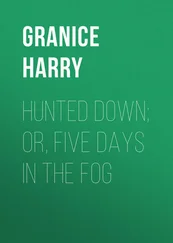Arrows in the Fog
Or
The Hair of the Tortoise
By
Günther Bach

Günther Bach
Arrows in the Fog
© 2004 by Verlag Angelika Hörnig
All rights reserved.
No part of this book may be reproduced or transmitted
in any form or by any means, electronic or mechanical,
without the written permission of the publisher.
Illustrations: Günther Bach
© quotation: Hans Magnus Enzensberger,
Vom Blätterteig der Zeit, aus:
Die Elixiere der Wissenschaft © Suhrkamp Verlag
Frankfurt am Main 2002
poem: Hans Magnus Enzensberger,
Das Einfache, das schwer zu erfinden ist, aus:
Die Elixiere der Wissenschaft
©Suhrkamp Verlag Frankfurt am Main 2002
Thanks for the authorization.
Translation: Robert Dohrenwend
Cover design: Angelika Hörnig
according to a photo of Silke Lübbert
Lecturer: Mitch Cohen
© 2012 ebook
ISBN: 978-3-938921-26-5
Verlag Angelika Hörnig
Siebenpfeifferstr. 18
D-67071 Ludwigshafen
Germany
www.archery.de
Table of Contents
1
2
3
4
5
6
7
8
9
10
11
12
13
14
15
16
17
18
19
20
21
22
23
24
25
26
27
28
29
30
31
32
33
Author
The Beginning
Evidently the time is gone
when you could believe that
it was possible to live
your life in step with the times.
Hans Magnus Enzensberger
For life doesn’t allow trial runs ,
it’s happening – right now.
James Ogilvy
1
Bärger was packing up.
Even after four years with the company, he didn’t have a lot to pile into the two banana boxes. Really, Bärger thought, I shouldn’t lug all this stuff around with me anymore. Not after I finally figured out that domestic utilities were never my strong point. One more bit of misinformation passed on to me when I was a student, like statics. How did the professor put it: “As an architect, you need to understand only enough statics to make it clear to a construction engineer what you need from him.”
Right, Professor, but your exams looked a lot different!
That was a long time ago.
Bärger lifted the last pile of books from the shelves on the wall, building construction and building design texts; good old Neufert, the 33 rdedition since 1936. The book had grown three times as thick since his days as a student in Dresden. Neufert, who had collaborated with Gropius on Measurements, Standards, and Codes , and then Bauhaus and the beginning of industrial construction.
How mixed all that was now, how easily blending ideas could become their exact opposite: the Gropius concept became the settlement in Dessau and the mass flats in Berlin, the capital of tacky buildings.
And now – the table lamps by Wagenfeld and the steel tube chairs by Breuer, Mies van der Rohe, and Mart Stam that were designed more than eighty years ago as economical purchases for everyday use by average people, were replicas offered as unique exquisite pieces at horrendous prices in today’s chic window displays.
Bärger unfolded a brochure printed on several pages of high gloss paper. The names of the inventors didn’t appear anywhere. It only referred to top creations of an international designer, as if this rubbish could be compared to the accomplishments of Mies and Mart Stam. The final sentence of the advertisement was a beautiful example of contemporary usage: “Ideal for raising your liquidity and for providing a quick tax shelter.” That sounded a lot better than Wagenfeld’s idea that the best features of the things around us should be the least obvious.
Through the open door, Bärger heard the noise of the elevator going down. Only now did he notice how quiet it was in the old corner house, which had been occupied by the Worker’s Council during the East German period. He looked at his watch; it was late. Glancing toward the window, he noticed that he had almost forgotten his small espresso coffeemaker. There was still enough black powder in the can, and as he shoved the small thick-walled mug under the spout and listened to the gurgling sound of the flowing coffee, he almost regretted that, once again, it was over.
He had had a very pleasant time here. He liked the large room with its ceiling as high as those in Italian Renaissance palaces.
The box with his business cards lay next to the drawing lamp. He picked it up and held it for a moment in his hand. Then, slowly, he let the whole pile slide into the wastebasket. A single card with the red company logo and the inscription “Chief Architect” fluttered to the floor. He picked it up, hesitated, then stuck it in his shirt pocket.
“That’s it then,” said Bärger aloud.
He was already at the door when the phone rang.
Bärger glanced at his watch. It was just before ten. He turned on the drawing lamp and reached for the receiver.
“Bärger,” he said. “I’m really not here anymore.”
But the caller didn’t pay any attention to him. “Are you still there? I’ve been looking for you at your house. What are you doing still at the office at this hour?”
It was Lothar, the representative of the Construction Committee, thorough and conscientious as usual. Had he forgotten anything else? Bärger pulled his desk calendar into the cone of light cast by the drawing lamp. Right, there it was. Tuesday, inspection of nuclear power plant. 8 o’clock.
“Hallo Lothar,” he said. “I’m doing what everyone in the office does, drinking coffee. No, no. I’m not kidding. I’ve just packed up the last of my stuff and I’m going straight home. Everything’s set. Tomorrow at eight in the parking lot. Yeah, see you tomorrow.” He hung up. The last telephone call, thought Bärger, perhaps even a gesture by fate, a glimpse of the future. Then he shoved both boxes over to the door, turned out the light, and shut the door.
How did that Spanish proverb go? When one door closes, another opens.
2
It was still summer.
But already the broad leaves of the lindens were turning yellow; the umbels of the mountain ash were a coral red color; and in the mornings, apples fell to the damp lawns with a dull thump.
Why am I doing this again, thought Bärger, as he walked toward the car just pulling in. I haven’t even finished drinking my tea, and besides, the whole thing is just a little senseless - as if I could evaluate a shutdown nuclear power plant.
He had requested materials, at least a construction plan, but there was nothing else available except for a site map provided by the prospective investor. It’s always this way, thought Bärger. I can only think about a building with a paper and pencil in hand.
The car door swung open and Bärger raised his hand in greeting as Lothar motioned for him to get in. He was correctly dressed as always in a light gray suit and freshly ironed shirt, the tie somewhat too loud, but tied with precision. Bärger looked down at himself. At least his jeans were clean, but he was wearing only an open shirt beneath his light blazer.
“Who did you dress up for today?” he asked.
Lothar grunted, annoyed, and drove the car out of the parking lot, turned on to the street and competently eased his way into the heavy traffic moving toward the outer ring road.
They had known each other long enough to be comfortable with silence.
Читать дальше










